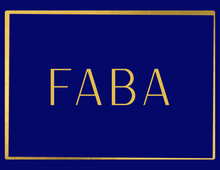Slow fashion is a movement that upholds a conscious and mindful approach to fashion. It really is the opposite of fast fashion. Slow fashion encourages consumers to carefully select and treasure high quality apparel that will last for years to come, instead of constantly upgrading their wardrobes with inexpensive, poor quality trend pieces.
The movement promotes awareness within the fashion industry. It asks companies to consider their production processes and the resources they use to create new pieces, and creates systems that are fair to workers and the planet. It advocates a slower buying cycle for consumers, inspiring people to ask themselves if they truly need the garment they’re about to buy.
Ane Howard is proud to be part of the slow fashion movement with her art-inspired eco fashion FABA collection. All pieces are handcrafted in California, London, Paris, and Montreal by artisans that are paid a fair wage and given excellent working collections. The high quality garments are made with eco fabrics including bamboo, recycled polyester, upcycled leather, and organic.
How Did Slow Fashion Emerge?
Slow fashion is a response to overproduction and overconsumption in the modern fashion industry. With some fast fashion companies producing up to 52 collections a year, slow fashion supporters began to grow increasingly concerned for the wellbeing of fashion industry workers and the planet itself.
The term ‘slow fashion’ was created by Kate Fletcher of the Centre for Sustainable Fashion as a response to the slow food movement. Fletcher, a professor of sustainability and design, thought that the fast-paced fashion industry needed a similar movement and many of her contemporaries agreed. The movement has been gaining traction over the past decade, and many slow fashion brands have emerged since its inception. Ane Howard has adopted a slow fashion approach to her collections from the start, creating made-to-order collections that eliminate overproduction.
Slow Fashion vs Sustainable Fashion
Is there a difference between slow fashion and sustainable fashion? Though both movements are very similar and follow many of the same principles and guidelines, they are not synonyms.
Slow fashion has a bigger emphasis on reducing overall consumption and production of fashion goods. It surpasses trends, instead focusing on timeless designs that will always be in style.
Sustainable fashion is more about the actual production of the garments. A slow fashion and sustainable fashion brand may use the same types of fabric and production methods, but the sustainable brand might release more styles than the slow fashion brand.
In a way, slow fashion is going back to the basics. Before the modern fashion cycle emerged, people would only buy a handful of quality garments that they would wear for decades. Slow fashion is bringing that mindset back. It removes the notion that clothes are disposable, and inspires consumers to treat their clothing as the treasured pieces they are. A person who practices slow fashion will mend or upcycle a garment before getting rid of it, and will shop their own wardrobe before buying something new.
Both movements go hand in hand, and are important to consider for anyone that wants to live a more eco-friendly lifestyle.
Slow Fashion by FABA
From athleisure pieces that will take you from home to the gym and elegant date night dresses, FABA’s unique prints will bring an artistic flair to every occasion.



